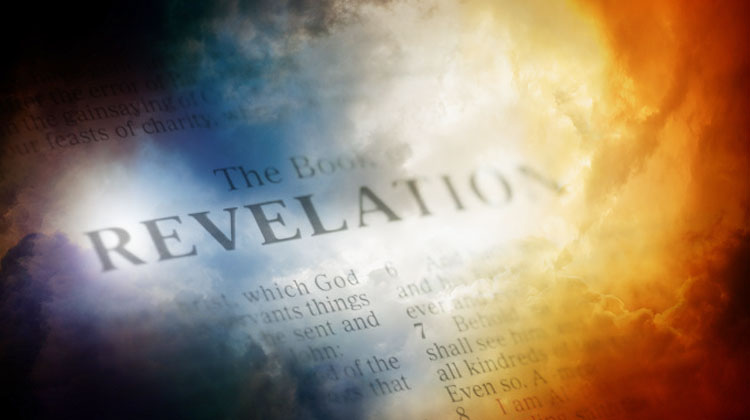The Book of Revelation stands as one of the most fascinating, mysterious, and powerful books in the Bible. As the final book of Scripture, Revelation brings the biblical story to its majestic conclusion—revealing the ultimate victory of Jesus Christ, the defeat of evil, and the hope of a renewed heaven and earth. Though it contains complex visions and vivid symbolism, at its core, the Book of Revelation is a message of prophecy and hope for all believers.

This article provides a comprehensive look at the background, structure, message, symbols, and spiritual relevance of Revelation. We will explore what it reveals about God’s ultimate plan for humanity and why this prophetic book remains a source of encouragement, not fear, for Christians today.
Introduction: A Revelation of Jesus Christ
The very first verse of Revelation sets the tone for the entire book:
“The revelation of Jesus Christ, which God gave him to show his servants what must soon take place.” (Revelation 1:1, NIV).
Understanding the Book of Titus: Leadership and Character
The Greek word for “revelation” is apokalypsis, meaning “an unveiling” or “a disclosure.” Far from being a book of hidden secrets, Revelation is intended to reveal—to unveil God’s truth about the present and the future. It is not primarily about doom, but about Jesus Christ Himself—His authority, His justice, and His coming glory.
The Book of Revelation offers both prophecy (foretelling what is to come) and hope (assurance of God’s ultimate victory). It assures believers that no matter how chaotic the world becomes, God is in control and His promises will be fulfilled.
Authorship and Background
The author identifies himself as John, traditionally believed to be John the Apostle, the same writer of the Gospel of John and the Epistles (1, 2, and 3 John). Revelation was written while John was exiled on the island of Patmos during the reign of Emperor Domitian around A.D. 95.
At that time, Christians faced severe persecution under the Roman Empire. Many were imprisoned, executed, or exiled for refusing to worship the emperor. In this context, Revelation was written to encourage suffering believers—reminding them that though evil may seem powerful, Christ reigns supreme and will return to establish His eternal kingdom.
The Purpose of Revelation
John states his purpose clearly in Revelation 1:19:
“Write, therefore, what you have seen, what is now and what will take place later.”
Thus, Revelation serves three main purposes:
- To reveal the glory and supremacy of Jesus Christ.
- To warn and encourage believers to remain faithful amid trials.
- To assure the ultimate triumph of God’s kingdom over all evil.
In essence, Revelation was not written to frighten believers, but to fortify their faith. Its visions and prophecies are meant to stir hope, perseverance, and worship in the face of adversity.
Understanding the Book of Hebrews: Jesus, the Superior
The Structure of the Book
The Book of Revelation contains 22 chapters and can be divided into several major sections:
- Prologue and Vision of Christ (Chapter 1) – John’s introduction and his vision of the glorified Christ.
- Letters to the Seven Churches (Chapters 2–3) – Messages of praise, correction, and encouragement to the churches in Asia Minor.
- Heavenly Throne and Seals (Chapters 4–7) – Visions of God’s throne, the Lamb, and the opening of seven seals.
- Trumpet Judgments (Chapters 8–11) – Announcements of divine judgment and warnings to the earth.
- Conflict Between Good and Evil (Chapters 12–14) – Symbolic depictions of Satan’s rebellion and God’s people’s victory.
- Bowl Judgments (Chapters 15–16) – Final outpouring of God’s wrath against sin.
- Fall of Babylon (Chapters 17–18) – The destruction of the corrupt world system.
- The Return of Christ (Chapter 19) – The glorious second coming of Jesus and the defeat of the beast.
- The Millennium and Final Judgment (Chapter 20) – Christ’s 1,000-year reign and the ultimate judgment of Satan and the wicked.
- New Heaven and New Earth (Chapters 21–22) – The eternal hope of believers: God dwelling with His people forever.
This structure highlights the progression from tribulation to triumph, culminating in eternal peace and glory for the redeemed.
The Seven Churches: Lessons for the Church Today
Revelation 2–3 contains letters addressed to seven churches in Asia Minor—Ephesus, Smyrna, Pergamum, Thyatira, Sardis, Philadelphia, and Laodicea. Each letter reveals Jesus’ evaluation of the church’s spiritual state.
- Ephesus – Commended for hard work but rebuked for losing their first love.
- Smyrna – Encouraged to remain faithful amid persecution.
- Pergamum – Warned against compromise with false teachings.
- Thyatira – Rebuked for tolerating immorality and idolatry.
- Sardis – Admonished for spiritual deadness despite reputation.
- Philadelphia – Commended for perseverance and faithfulness.
- Laodicea – Condemned for lukewarmness and pride.
Understanding the Book of Philemon: Forgiveness and Reconciliation
These messages remind the modern church that spiritual vigilance, love, and faithfulness are essential for enduring in a corrupt world.
The Central Theme: The Triumph of Jesus Christ
The heart of Revelation is the triumph of Jesus Christ over all evil powers. From beginning to end, Christ is portrayed as the Lamb who was slain but now reigns (Revelation 5:6–13). He is both the Redeemer and the Judge.
Despite terrifying visions of beasts, plagues, and wars, the underlying message is one of victory:
“The kingdom of the world has become the kingdom of our Lord and of his Christ, and he will reign for ever and ever.” (Revelation 11:15)
This assurance of victory forms the foundation of Christian hope. Evil will not prevail forever; Christ will return to establish righteousness and peace.
Symbolism in Revelation
The Book of Revelation is rich in symbolism, using vivid imagery to communicate spiritual truths. While not every detail is literal, the symbols carry profound meaning.
Some key symbols include:
- The Lamb – Jesus Christ, the sacrificial Savior.
- The Beast and False Prophet – Represent worldly powers and deceptive systems opposing God.
- The Dragon – Symbolic of Satan, the ultimate enemy.
- The Number 7 – Represents perfection and completeness.
- The Woman and Child (Revelation 12) – Represent God’s people and the birth of Christ.
- The New Jerusalem – Symbol of God’s eternal dwelling place with His people.
Understanding these symbols helps readers grasp the spiritual depth of Revelation without being overwhelmed by the imagery.
Prophecy and Fulfillment: God’s Ultimate Plan
Revelation contains prophetic visions of future events, including:
- The rise of global deception and persecution.
- The final battle between good and evil.
- The second coming of Christ.
- The final judgment.
- The creation of a new heaven and earth.
Yet, these prophecies are not meant to create fear but to inspire readiness and faith. Revelation assures believers that history is moving toward God’s predetermined end—a restored creation where righteousness reigns.
Understanding the Book of Jude: Contending and Warning
“He will wipe every tear from their eyes. There will be no more death or mourning or crying or pain.” (Revelation 21:4)
This is the ultimate hope of all believers.
The Message of Hope
Although Revelation depicts trials and judgments, its central tone is one of hope and encouragement. The book assures us that:
- God is sovereign – Nothing happens outside His control.
- Jesus reigns victorious – Evil and death have been defeated.
- Believers are secure – God will preserve His faithful ones.
- Eternal glory awaits – The future is bright for those in Christ.
In the face of persecution, suffering, or uncertainty, the message of Revelation strengthens our confidence that God’s promises are certain. The book ends not in despair but in joyful anticipation of eternal fellowship with God.
Practical Lessons from Revelation
a. Remain Faithful
Revelation calls believers to endure hardship and remain loyal to Christ, no matter the cost.
“Be faithful, even to the point of death, and I will give you the crown of life.” (Revelation 2:10)
b. Live in Readiness
Christ’s return is certain though the exact time is unknown. Believers are called to spiritual watchfulness and holy living.
“Behold, I am coming soon! Blessed is he who keeps the words of the prophecy in this book.” (Revelation 22:7)
c. Worship God Alone
Throughout Revelation, worship is central. Believers are reminded to worship God, not worldly powers or possessions.
“Worship God! For the testimony of Jesus is the spirit of prophecy.” (Revelation 19:10)
d. Overcome Evil with Good
Revelation emphasizes spiritual victory through faithfulness, not violence.
“They overcame him by the blood of the Lamb and by the word of their testimony.” (Revelation 12:11)
e. Hold Fast to Hope
Even amid tribulation, believers are to look forward to the new creation where God’s presence will dwell forever.
Understanding the Book of James: Faith and Works
The Eternal Vision: New Heaven and New Earth
The climax of Revelation (Chapters 21–22) describes the most beautiful vision in all of Scripture: the New Heaven and New Earth. God Himself declares:
“Behold, I make all things new.” (Revelation 21:5)
In this new creation:
- God dwells among His people.
- There is no more sorrow, pain, or death.
- The curse of sin is removed.
- The redeemed will see God face to face (Revelation 22:4).
This vision fulfills all of God’s promises from Genesis to Revelation—restoration, redemption, and eternal fellowship with the Creator.
Conclusion: A Message of Prophecy and Hope
The Book of Revelation is not merely a book about end-times mysteries—it is a revelation of Jesus Christ’s glory, faithfulness, and victory. It reveals God’s sovereign plan for history and assures believers of eternal hope beyond present suffering.
Amid persecution, confusion, and moral decay, Revelation calls the church to stand firm, remain holy, and fix our eyes on the coming King. The final words of Scripture echo through the ages as a promise and a prayer:
“He who testifies to these things says, ‘Yes, I am coming soon.’ Amen. Come, Lord Jesus.” (Revelation 22:20)
Indeed, the Book of Revelation reminds us that the story of humanity ends not with chaos, but with Christ’s eternal reign. This is the prophecy that brings hope to every believer—the assurance that Jesus wins.
Last modified: October 21, 2025




